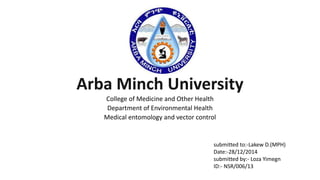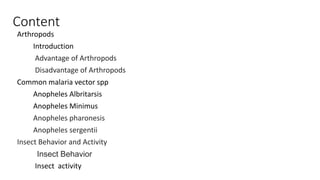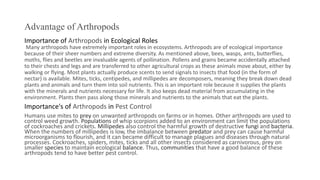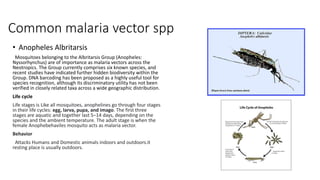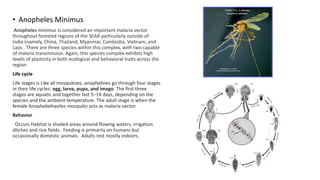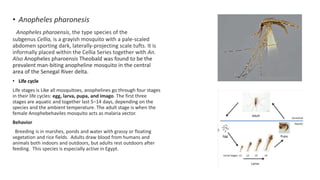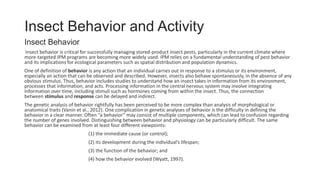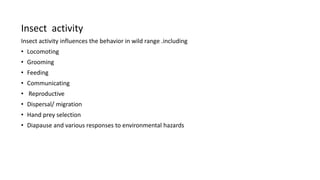This document discusses arthropods and common malaria vector species. It provides background on arthropods, noting their segmented bodies and exoskeletons. It then discusses the advantages of arthropods in ecological roles like pollination and decomposition. Four common malaria vector species are described: Anopheles albimanus, Anopheles minimus, Anopheles pharoensis, and Anopheles sergentii. Their life cycles and behaviors are summarized. The document also covers insect behavior and activity, noting how behaviors are influenced by factors like locomotion, feeding, and responses to the environment.
